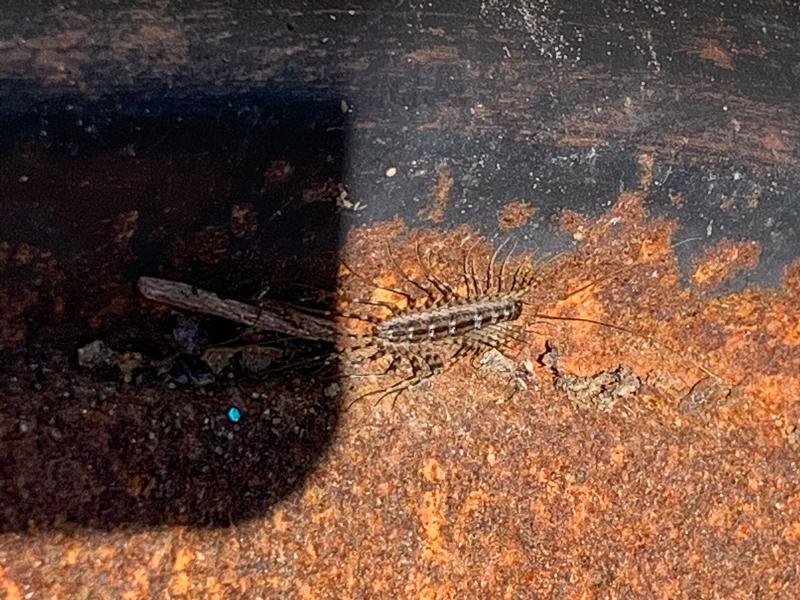Ask a Naturalist: Meet Your Roommate, The House Centipede
For immediate release ‐ February 01, 2021
Ask a Naturalist
Contact: Jessica Wackes, 919.707.9850. Images available upon request

There’s a reasonable chance you are currently cohabitating with the critter in this photo — a house centipede (Scutigera coleoptrata). The first time I encountered one, I was pretty frightened, to be honest. Let’s review some basics about centipedes and discover why you shouldn’t fear this common arthropod.
The word centipede literally means “one hundred feet;” however, no centipede has exactly 100 feet or legs. Among the thousands of centipede species, adult leg numbers range from as few as 30 (house centipede) to over 300. All centipedes have only one pair of legs per segment and their flexible, flattened bodies are built for speed.
House centipedes can run along walls, floors and ceilings and may reach speeds of over one foot per second. This could explain why the person submitting this Ask a Naturalist question said, “My daughter ran for her life!” when the house centipede was spotted in their backyard! Speed helps centipedes capture their prey, which includes a variety of smaller arthropods like insects and spiders.
House centipedes hunt mostly at night using their extra-long antennae to search for food. At their posterior end, they have a pair of very long legs that closely resemble antennae. These antenna-like legs may function to confuse predators or, because they are covered with sensory hairs, may act like a set of extra antennae that can detect smells and vibrations. House centipede legs have highly segmented tips that can be used to “lasso” and subdue prey. The centipede then finishes off its victims by injecting venom via fang-like structures called forciples, which are the modified first pair of legs.
House centipedes like to live in warm, humid places and may find their way to your bathroom or basement, especially during the colder, winter months. They are voracious and will gobble up pests like roaches, earwigs, silverfish, bed bugs, flies, moths and spiders. House centipedes rarely bite people or pets and usually do so only if provoked. Their venom is less toxic than other centipedes so, if a bite does occur, the effects are usually not serious.
I’ll bet you are wondering how millipedes are different from centipedes, so here are a few more fun facts. Millipedes have two pairs of legs per body segment and move slowly, unlike centipedes. No millipede species has 1,000 legs even though millipede means “thousand feet.” They are vegetarians (they feed on decaying plant material) and completely lack structures to pinch, bite or sting. (Learn all about millipedes on Thursday, February 4 at 7pm EST during our weekly YouTube series, “Science Tonight with Chris Smith!”)
Despite how scary they may look, centipedes play an important ecological role. They eat multiple types of pests around your home, like bed bugs or termites. So while they might not be “the most beautiful” of the arthropods, they can certainly be incredibly helpful to you without your awareness. Let’s show these animals some appreciation! Even if it’s from a distance….
By Cindy Lincoln, Naturalist Center Coordinator
Do you have a question about a plant, animal or natural object? Be sure to Ask a Naturalist!
Previous Ask a Naturalist: Salamanders | Older Ask a Naturalist posts
For more information about our upcoming activities, conservation news and ground-breaking research, follow @NaturalSciences on Instagram, Twitter and Facebook. Join the conversation with #visitNCMNS.

